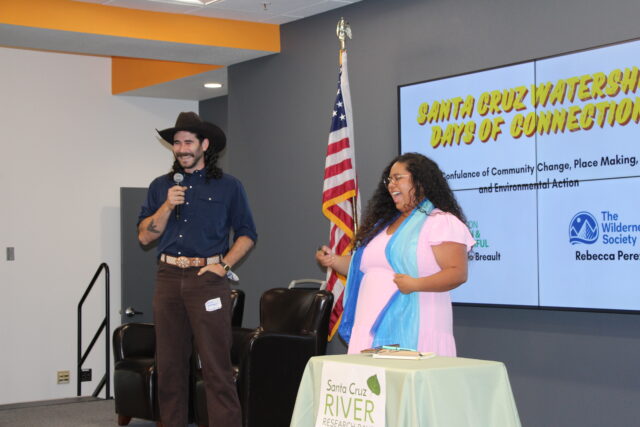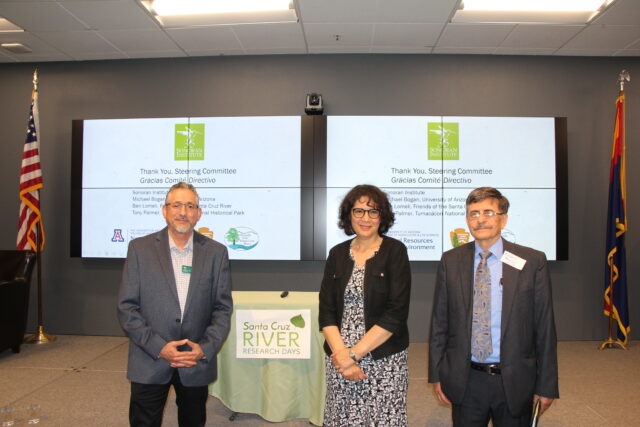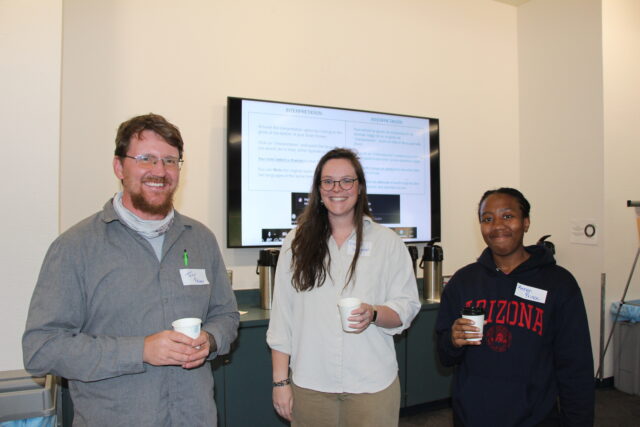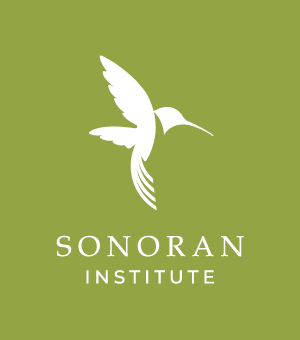By Alex Corral, Santa Cruz River program manager, Sonoran Institute
As the newest member of the Santa Cruz River team at Sonoran Institute, I’d heard this annual symposium was something special—a gathering place for scientists, students, government agencies, and passionate community members—but I didn’t realize just how powerful it would be until I experienced it firsthand. Over the course of three days, I witnessed an inspiring mix of technical expertise, cultural reflection, and heartfelt commitment to a river that connects us all.

Held April 29–30 with a sunny field trip on May 1, this year’s event centered around the theme “Building on Successes.” It was both a celebration of the work that’s been done to restore and understand the river and a call to continue the momentum. Research Days is one of the few places where you can hear about wastewater treatment, tribal cultural traditions, fish populations, and plastic pollution—all within the same room. As someone who is still learning the full story of this river, I felt lucky to be surrounded by people who live and breathe its complexities every day.

We kicked off with a compelling keynote panel that set the tone for the entire event. Moderated by our own Dr. Francisco Zamora, the panel featured Dr. Maria-Elena Giner, former U.S. Commissioner of the International Boundary and Water Commission, and Ing. Luis Antonio Rascón Mendoza, Principal Engineer from Mexico’s equivalent, CILA. Together, they discussed binational cooperation on the Santa Cruz River, diving into everything from historical treaties and aging wastewater infrastructure to funding disparities and shared governance challenges. It reminded me that this river doesn’t just flow through landscapes—it flows through politics, history, and communities on both sides of the border.
Throughout the next two days, I was struck by the variety of research and restoration efforts taking place. Matthew Mayer from the University of Arizona presented fascinating data on native fish demographics in the river. His findings about shifts in Gila Topminnow, hybrids, and Mosquitofish populations—even down to their size and sex ratios—gave us a peek into how river ecology is evolving in real time.
Other presentations looked at the less visible challenges. Emily Waggoner, a graduate researcher in molecular and cellular biology, shared new data on microplastic pollution and organophosphate esters (OPEs) in the Santa Cruz River. By analyzing samples near a trash dam at Tumacácori National Historical Park, her team is trying to understand how pollutants are influencing microbial communities that keep the river functioning. It was a sobering reminder that what we don’t see can still do harm—and that science is helping us understand and mitigate those threats.

But the event wasn’t just about data—it was also about community and culture. One highlight for me was the video presentation from Jacelle Ramon-Sauberan of the Tohono O’odham Community College. Through video storytelling, she shared the deep cultural and spiritual connections the Tohono O’odham Nation has with the Santa Cruz River, especially through traditional practices like saguaro fruit harvesting. These stories showed how restoration is not only about water and wildlife—it’s about memory, identity, and resilience. Decades of development and diversion have disrupted the O’odham way of life, but efforts to restore the river are also helping to revive traditions and heal communities.
Local governments are stepping up, too. Kimberly Baeza from the Pima County Regional Wastewater Reclamation Department shared hopeful plans to restore flow to a stretch of the river downstream of the Green Valley Wastewater Reclamation Facility. This potential project would create ecological and recreational value for a growing area that’s deeply tied to the river.

The final day was one I’ll never forget. We took a field trip to Tubac, where the Tubac Nature Center, Tucson Bird Alliance, and local partners are working together to restore river habitat. With 21 participants—including scientists, students, and local residents—we explored a vibrant site where non-native plants are being removed, wildlife habitat is being re–created, and a community space is coming to life. Seeing this work in action, on the ground, was the perfect way to end the event. It made the research and data feel real—and it reminded me why we do what we do.
As I reflect on this experience, I’m more motivated than ever to contribute to Sonoran Institute’s mission. The Santa Cruz River is not just an ecological corridor—it’s a cultural, political, and community artery at the heart of the Sonoran Desert. At Research Days, I saw firsthand how people from different disciplines, backgrounds, and even countries are coming together to protect it. I’m proud to be part of that and to have the chance to work with an amazing team.
View this year’s recordings in English here: Day 1, Day 2, Day 2 cont. o en Español aquí: día 1, día 2, día 2 continua.
Check out proceedings and presentations from this and past events at here.
Visit our website and search “Research Days” to explore more.















